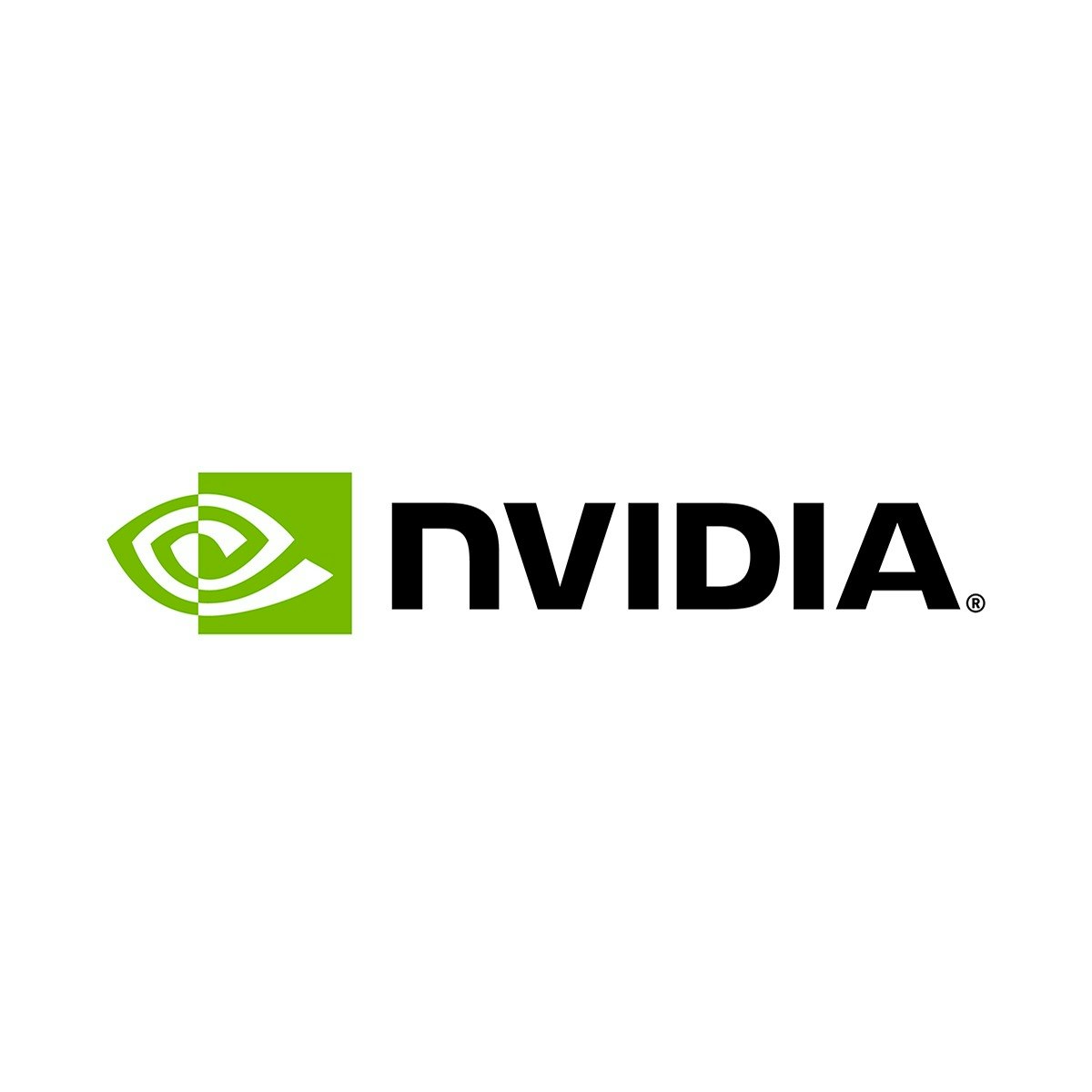Networking
An Introduction to Computer Networking
Computer networking is the practice of connecting computers and other devices together to share resources and communicate. Think of it as the digital highway system that allows information to travel instantly across the room or around the globe. From sending an email to streaming a video, networking underpins almost every aspect of our modern digital lives. It involves designing, building, and maintaining these connections, ensuring data flows smoothly, efficiently, and securely.
Working in networking can be an exciting path, offering the chance to build and manage the essential infrastructure that powers our interconnected world. Professionals in this field often find satisfaction in solving complex technical puzzles, ensuring systems run reliably, and protecting networks from threats. Furthermore, the constant evolution of technology means there are always new challenges to tackle and new skills to learn, keeping the work dynamic and engaging. Whether you're ensuring a small office stays connected or architecting massive cloud networks, the impact of networking expertise is tangible and vital.
Introduction to Networking
What is Computer Networking?
At its core, computer networking enables communication between different computing devices. This communication facilitates the sharing of data, resources (like printers or internet access), and services. Networks range in scale from small personal area networks (PANs) connecting devices around an individual, to local area networks (LANs) within a building, wide area networks (WANs) spanning cities or countries, and ultimately, the global internet itself.
The fundamental purpose is to allow devices to exchange information. This exchange happens through a combination of hardware (like routers, switches, cables, and wireless access points) and software (operating systems, network protocols). Protocols are standardized rules that dictate how data is formatted, addressed, transmitted, routed, and received, ensuring that devices speaking different "languages" can still understand each other.
Understanding networking involves learning about these hardware components, the software protocols that govern communication, and the principles of network design and security. It's a field that combines theoretical knowledge with practical application, requiring professionals to configure devices, troubleshoot problems, and plan for future network growth and security needs.
A Brief History and Key Milestones
The roots of computer networking stretch back to the 1960s with projects like ARPANET, funded by the U.S. Department of Defense. ARPANET pioneered packet switching, a method of breaking data into small packets for transmission, which remains a cornerstone of modern networking. This early network connected research institutions and laid the groundwork for the internet as we know it today.
The 1970s saw the development of crucial protocols like TCP/IP (Transmission Control Protocol/Internet Protocol), which became the standard for internet communication. Ethernet, a standard for local area networks, also emerged during this decade, enabling faster and more reliable connections within organizations. The 1980s brought the Domain Name System (DNS), making the internet more user-friendly by translating human-readable domain names (like opencourser.com) into numerical IP addresses.
The 1990s marked the birth of the World Wide Web, transforming the internet from a primarily academic and military network into a global public resource. This era saw exponential growth in internet usage, fueled by graphical web browsers and the rise of commercial Internet Service Providers (ISPs). Subsequent decades brought advancements like widespread broadband access, wireless networking (Wi-Fi), mobile networks (3G, 4G, 5G), cloud computing, and the Internet of Things (IoT), each significantly expanding the scope and complexity of networking.
Why Networking Matters Today
In the 21st century, networking is the invisible backbone of the digital world. It enables global communication, commerce, entertainment, education, and countless other activities. Businesses rely on networks for internal operations, customer interactions, and accessing cloud services. Critical infrastructure, including power grids, financial systems, and healthcare services, depends heavily on reliable and secure networks.
The rise of remote work, online learning, and telehealth has further underscored the importance of robust networking. Without efficient networks, these essential services couldn't function. Furthermore, emerging technologies like the Internet of Things (IoT), artificial intelligence (AI), and edge computing are creating new demands and opportunities within the networking field, requiring faster, more intelligent, and more secure network solutions.
For individuals considering a career in technology, networking offers a fundamental skill set applicable across many domains. Whether specializing in network administration, cybersecurity, cloud computing, or software development, a solid understanding of networking principles is invaluable. It's a field that provides the critical infrastructure enabling nearly all other technological advancements.
Key Concepts in Networking
Understanding Network Types
Networks come in various sizes and configurations, tailored to specific needs. The most common type is the Local Area Network (LAN), which typically connects devices within a limited geographical area, such as a single home, office building, or school campus. LANs often use technologies like Ethernet (wired) or Wi-Fi (wireless) for connectivity.
Wide Area Networks (WANs) connect devices over much larger geographical distances, often linking multiple LANs together across cities, states, or even countries. The internet itself is the largest example of a WAN. WANs typically rely on technologies provided by telecommunication carriers, such as fiber optic lines, satellite links, or leased lines, to bridge these long distances.
Other important network types include Virtual Private Networks (VPNs), which create secure, encrypted connections over a public network like the internet, allowing users to access private network resources remotely as if they were directly connected. Metropolitan Area Networks (MANs) span a city or large campus, larger than a LAN but smaller than a WAN. Understanding these different types is crucial for designing and managing appropriate network solutions.
Essential Network Protocols
Protocols are the languages of networks, defining the rules for communication. The most fundamental suite is TCP/IP (Transmission Control Protocol/Internet Protocol). IP handles the addressing and routing of data packets to ensure they reach the correct destination across different networks. TCP ensures reliable data transmission by managing connections, breaking data into packets, reassembling them at the destination, and handling error checking and retransmission if packets are lost.
Higher-level protocols build upon TCP/IP to enable specific applications. The Hypertext Transfer Protocol (HTTP) and its secure version (HTTPS) are used for accessing websites. The Domain Name System (DNS) acts like the internet's phonebook, translating user-friendly domain names (e.g., www.opencourser.com) into the numerical IP addresses computers use to locate each other.
Other key protocols include Simple Mail Transfer Protocol (SMTP) for sending email, Post Office Protocol (POP3) and Internet Message Access Protocol (IMAP) for receiving email, and File Transfer Protocol (FTP) for transferring files. Each protocol serves a specific function, working together within the layered TCP/IP model to make network communication possible.
These introductory courses provide a solid overview of networking fundamentals, including protocols and network types.
Network Topologies and Architectures
Network topology refers to the physical or logical arrangement of devices and connections in a network. Physical topology describes the actual layout of cables and hardware, while logical topology describes how data flows between devices. Common physical topologies include Bus (all devices share a single cable), Star (all devices connect to a central hub or switch), Ring (devices are connected in a circular loop), and Mesh (devices have multiple connections to each other for redundancy).
The Star topology, typically implemented with switches, is the most common for modern LANs due to its reliability and ease of management. If one connection fails, only that device is affected. Mesh topologies offer high redundancy but are more complex and expensive to implement, often used in critical network backbones or wireless networks.
Network architecture refers to the overall design framework of a network, encompassing topology, protocols, hardware, and software. Examples include client-server architecture, where client devices request resources from central servers, and peer-to-peer (P2P) architecture, where devices connect directly to share resources without a central server. Cloud architectures involve utilizing resources hosted in data centers accessed over the internet. Understanding these arrangements is key to designing efficient and scalable networks.
ELI5: How Data Travels on a Network
Imagine you want to send a letter (your data) to a friend in another city (another computer). First, you write the letter and put it in an envelope. On the envelope, you write your friend's address (the destination IP address) and your return address (your source IP address). This is like your computer packaging data with addressing information using the IP protocol.
Now, you need to get this letter to the post office (your local router or switch). The post office looks at the destination address and decides the best path to send it towards your friend's city. It might go through several other post offices (routers) along the way. Each post office only needs to know the next hop towards the destination. This is routing.
Sometimes, for important letters, you might use registered mail (like TCP) which tracks the letter and makes sure your friend signs for it. If it gets lost, the post office tries sending it again. For less important things like postcards (like UDP), you just send them, hoping they arrive, but there's no tracking or guarantee. Finally, when the letter arrives at your friend's local post office, it's delivered to their specific house address. Similarly, network protocols ensure data packets reach the correct application on the destination computer.
Career Opportunities in Networking
Common Roles in Networking
The field of networking offers diverse career paths. A common entry point is the Help Desk Technician or IT Support Specialist, providing initial troubleshooting for users. With experience and foundational knowledge, individuals often move into roles like Network Administrator. Administrators are responsible for the day-to-day operation, maintenance, and management of an organization's network infrastructure, including configuring routers and switches, managing user access, and monitoring network performance.
More specialized roles include Network Engineer, who focuses on designing, implementing, and upgrading network systems. Security-focused roles like Network Security Engineer concentrate on protecting networks from threats, implementing firewalls, intrusion detection systems, and security policies. As cloud computing becomes ubiquitous, roles like Cloud Network Engineer or Cloud Architect are increasingly in demand, specializing in designing and managing network infrastructure within cloud platforms like AWS, Azure, or Google Cloud.
Other roles might include Network Analyst (monitoring and analyzing network traffic and performance), Telecommunications Specialist (focusing on voice and data communication systems), or Wireless Network Engineer (specializing in Wi-Fi and other wireless technologies). Each role requires a specific blend of technical skills, troubleshooting abilities, and often, vendor-specific knowledge.
These courses cover skills relevant to security, cloud, and IoT networking roles.
Industries Relying on Networking Expertise
Virtually every modern industry relies heavily on computer networking. The Telecommunications sector is fundamentally built on networking principles, providing the infrastructure for internet, phone, and mobile services. Financial institutions require highly secure and reliable networks for transactions, data processing, and communication. Healthcare providers depend on networks for electronic health records (EHRs), medical imaging transmission, telehealth services, and connecting medical devices.
Technology companies, from software developers to hardware manufacturers and cloud service providers, are major employers of networking professionals. Government agencies at all levels need robust networks for operations, communication, and public services. Educational institutions rely on networks for administration, online learning platforms, and research activities. Retail businesses use networks for point-of-sale systems, inventory management, e-commerce platforms, and customer communication.
Manufacturing, transportation, entertainment, and energy sectors also have significant networking needs for process control, logistics tracking, content delivery, and infrastructure management. This broad applicability means networking skills are transferable across a wide range of industries, offering flexibility in career choices.
Emerging Specializations and Future Trends
The networking field is constantly evolving, creating new areas of specialization. The rise of the Internet of Things (IoT) generates demand for professionals who can design and manage networks connecting billions of diverse devices, often with unique security and performance requirements. Cybersecurity remains a critical and growing specialization within networking, focusing on defending against increasingly sophisticated threats.
Cloud networking continues its rapid expansion as organizations migrate more services to the cloud. Expertise in specific cloud platforms (AWS, Azure, Google Cloud) and hybrid cloud environments is highly valued. Software-Defined Networking (SDN) and Network Function Virtualization (NFV) are transforming how networks are designed and managed, emphasizing software control and automation over traditional hardware configurations. Skills in network automation using tools like Python, Ansible, or Terraform are becoming increasingly important.
The rollout of 5G technology and the development of future wireless standards create opportunities in mobile networking and edge computing, bringing computation and data storage closer to users. As network complexity grows, AI-driven network management and analytics (AIOps) are emerging fields aimed at improving performance, automating troubleshooting, and enhancing security. Staying abreast of these trends is key for long-term career growth in networking.
These courses delve into security basics and specific cloud networking environments.
Formal Education Pathways
Relevant Degree Programs
A formal education can provide a strong theoretical foundation for a career in networking. Bachelor's degrees in Computer Science, Information Technology (IT), or Computer Engineering are common pathways. Computer Science programs often offer a broader theoretical base, including algorithms, data structures, and operating systems, with options to specialize in networking.
Information Technology programs are typically more applied, focusing directly on the implementation and management of technology infrastructure, including networks, systems administration, and cybersecurity. Some universities offer specific degrees in Network Engineering, Telecommunications, or Cybersecurity, providing highly focused curricula.
For those seeking deeper expertise or research-oriented roles, Master's or Ph.D. degrees in these fields offer advanced coursework and specialization opportunities. An Associate's degree in IT or networking from a community college can also be a viable starting point, often leading to entry-level support or technician roles, with the option to transfer to a four-year university later.
Core Coursework and Foundational Subjects
Regardless of the specific degree program, a solid networking career builds upon several core subjects. Foundational courses in networking principles are essential, covering topics like the OSI and TCP/IP models, IP addressing and subnetting, routing protocols (like OSPF and BGP), switching concepts (like VLANs and Spanning Tree Protocol), WAN technologies, and wireless networking fundamentals.
Beyond core networking, related subjects are crucial. Courses in Operating Systems (particularly Linux and Windows Server) are important, as network devices run specialized OSes and networks connect servers running various systems. Cybersecurity fundamentals, including network security principles, firewalls, VPNs, and intrusion detection, are increasingly vital. Database management and basic programming or scripting skills (e.g., Python, Bash) are also highly beneficial for network automation and management tasks.
Mathematics, particularly discrete math, can be helpful for understanding algorithms used in networking protocols and cryptography. Courses covering computer hardware and architecture provide context for how network devices function. Strong problem-solving and analytical skills, often developed through coursework in various technical subjects, are paramount for troubleshooting network issues.
Consider exploring courses on OpenCourser's IT & Networking or Computer Science category pages to supplement formal education.
Research and Advanced Topics
For those pursuing graduate studies or interested in the cutting edge of networking, numerous research areas offer exciting possibilities. Quantum networking explores the use of quantum mechanics principles to create highly secure communication channels, potentially revolutionizing cryptography and secure data transmission.
AI-driven networking applies machine learning techniques to automate network management, optimize performance, predict failures, and enhance security through intelligent threat detection and response. Research in Software-Defined Networking (SDN) and Network Function Virtualization (NFV) continues to push the boundaries of network programmability, flexibility, and efficiency.
Other advanced topics include next-generation wireless technologies (beyond 5G), high-performance networking for supercomputing and big data applications, network resilience and survivability, green networking (reducing the energy consumption of network infrastructure), and the challenges of networking in space or other extreme environments. These research areas often involve interdisciplinary collaboration and push the limits of current technology.
Online Learning Opportunities
Flexibility: Self-Paced vs. Instructor-Led Online Courses
Online learning offers tremendous flexibility for acquiring networking knowledge and skills. Platforms like OpenCourser aggregate courses from various providers, allowing learners to find options that fit their schedule and learning style. Self-paced courses provide the ultimate flexibility, letting learners study whenever and wherever they choose, revisiting material as needed. This format is ideal for busy professionals or those who prefer to control their learning speed.
Instructor-led online courses offer more structure, often following a set schedule with deadlines for assignments and exams. They typically include interaction with instructors and fellow students through discussion forums, live sessions, or group projects. This can provide valuable accountability, personalized feedback, and networking opportunities, mimicking aspects of a traditional classroom experience but with the convenience of online access.
Many online programs also offer blended formats, combining self-paced modules with optional live sessions or required group activities. Choosing the right format depends on individual learning preferences, time constraints, and the level of interaction desired. OpenCourser's search and filtering tools can help learners identify courses matching their preferred format and schedule.
Hands-On Labs and Certification Preparation
Practical experience is critical in networking. Many online courses incorporate virtual labs or simulations that allow learners to practice configuring routers, switches, firewalls, and other network devices in a safe environment. Tools like Cisco Packet Tracer or GNS3 are often integrated into online curricula, providing invaluable hands-on practice without needing expensive physical hardware.
Cloud platforms like AWS, Azure, and Google Cloud also offer free tiers or credits, enabling learners to experiment with configuring cloud networking services directly. Online courses frequently focus on preparing learners for industry-recognized certifications, such as CompTIA Network+, Cisco CCNA, CCNP, or various cloud vendor certifications. These courses cover the specific exam objectives, offer practice questions, and often include full-length mock exams to gauge readiness.
Earning certifications through online preparation can significantly boost employability, demonstrating practical skills and commitment to potential employers. OpenCourser lists numerous courses specifically designed for certification prep across various networking domains and vendor ecosystems.
These courses offer hands-on labs or focus on building practical skills for specific networking tasks or certifications.
Building a Portfolio with Online Projects
Beyond completing coursework and labs, undertaking personal projects is an excellent way to solidify learning and showcase skills to potential employers. Online learning resources can inspire and guide these projects. A common starting point is setting up and configuring a home network beyond basic defaults, perhaps implementing VLANs, setting up a firewall, or configuring a VPN server.
Using simulation tools like Packet Tracer or GNS3, learners can design and implement more complex network scenarios, such as a small business network with multiple sites or specific security configurations. Documenting these projects, including network diagrams, configuration files, and a write-up of the goals and challenges, creates valuable portfolio pieces.
Contributing to open-source networking projects or participating in online networking communities and forums can also provide practical experience and visibility. Some advanced online courses include capstone projects where learners design and implement a significant networking solution, which can serve as a major portfolio item. Highlighting these projects on a resume or professional networking profile demonstrates initiative and practical ability.
Consider using OpenCourser's list feature to curate a learning path combining foundational courses with project-based learning and certification prep.
Career Progression in Networking
From Entry-Level to Senior Roles
A typical career path in networking often begins in entry-level support roles, such as Help Desk Technician or IT Support Specialist. These positions provide exposure to basic troubleshooting, user interaction, and fundamental IT concepts. With foundational certifications like CompTIA A+ or Network+ and some experience, individuals can transition into roles like Junior Network Technician or Network Operations Center (NOC) Technician, focusing more directly on network monitoring and maintenance.
The next step is often Network Administrator, involving managing the day-to-day operations of the network. Further progression leads to Network Engineer roles, focusing on design, implementation, and optimization. Senior Network Engineers or Network Architects take on responsibility for designing complex network solutions, planning capacity, evaluating new technologies, and leading projects. Leadership roles like Network Manager or IT Manager involve overseeing networking teams and strategy.
Specialization can also drive progression. Developing deep expertise in areas like network security, cloud networking, voice over IP (VoIP), or wireless networking can lead to specialized senior engineer or architect roles. Continuous learning and obtaining advanced certifications are often key to advancing along these paths.
These courses cover certifications often pursued by those progressing in their networking careers, like CCNA and AWS Advanced Networking.
The Role of Certifications
Industry certifications play a significant role in the networking field. They serve as standardized validation of knowledge and skills, often valued by employers during hiring and promotion processes. Foundational certifications like CompTIA Network+ demonstrate a broad understanding of networking concepts and are often a good starting point.
Vendor-specific certifications are highly regarded, particularly from major players like Cisco (CCNA, CCNP, CCIE), Juniper (JNCIA, JNCIS, JNCIP, JNCIE), and cloud providers (AWS Certified Advanced Networking, Azure Network Engineer Associate, Google Cloud Professional Cloud Network Engineer). These certifications validate expertise in configuring and managing specific vendor hardware or cloud platforms.
Security-focused certifications like CompTIA Security+, Certified Ethical Hacker (CEH), or Certified Information Systems Security Professional (CISSP) are valuable for those specializing in network security. While experience is crucial, certifications can open doors, potentially lead to higher salaries, and demonstrate a commitment to ongoing professional development in a rapidly changing field. Many online courses are specifically designed to prepare learners for these certification exams.
These courses offer preparation for popular Cisco certifications.
Developing Leadership and Cross-Functional Skills
Advancing beyond senior technical roles often requires developing leadership and cross-functional skills. Technical expertise alone may not be sufficient for management or architect positions that involve strategic planning, team leadership, and communication with non-technical stakeholders. Skills in project management, budgeting, and vendor negotiation become increasingly important.
Effective communication is paramount – being able to explain complex technical concepts clearly to different audiences, write concise documentation, and present proposals convincingly. Collaboration skills are essential for working effectively with other IT teams (like systems administrators, security analysts, and developers), business units, and external partners.
Mentoring junior team members, leading projects, and taking initiative to solve broader organizational problems demonstrate leadership potential. In the context of career growth, it's also important to understand the other meaning of "networking": building professional relationships. Attending industry conferences, participating in online communities, and connecting with peers and mentors can provide valuable insights, support, and opportunities. Soft skills and professional connections often differentiate candidates for leadership roles.
While focused on computer networking, building professional relationships is key to career growth. These books offer insights into effective professional networking.
These courses focus on building professional skills and connections, which are vital alongside technical expertise.
Current Trends in Networking
The Impact of 5G and Edge Computing
The widespread deployment of 5G wireless technology is significantly impacting networking. Offering higher speeds, lower latency, and the ability to connect a massive number of devices, 5G enables new applications like autonomous vehicles, advanced telehealth, immersive augmented/virtual reality, and large-scale IoT deployments. Managing and optimizing these complex wireless networks presents new challenges and opportunities for networking professionals.
Closely related is the rise of edge computing. Instead of sending all data to centralized cloud data centers for processing, edge computing brings processing power and storage closer to where data is generated – at the "edge" of the network. This reduces latency, saves bandwidth, and improves responsiveness for applications like real-time analytics, industrial automation, and content delivery. Designing and managing the network infrastructure connecting edge devices, edge servers, and the central cloud requires specialized networking skills.
Networking professionals need to understand how 5G and edge computing architectures work together, addressing challenges related to security, orchestration, and connectivity across distributed environments. Familiarity with technologies like Multi-access Edge Computing (MEC) and specific 5G network functions is becoming increasingly valuable.
Software-Defined Networking (SDN) and Network Automation
Software-Defined Networking (SDN) represents a major shift in network architecture. It decouples the network's control plane (which makes decisions about where traffic goes) from the data plane (which forwards the traffic). This allows for centralized management and programmability of the network through software applications. SDN enables greater agility, automation, and flexibility compared to traditional networks where control logic resides in individual hardware devices.
Network automation builds upon SDN principles and utilizes scripting languages (like Python) and automation tools (like Ansible, Terraform, Puppet, Chef) to automate repetitive network tasks such as configuration management, provisioning, monitoring, and troubleshooting. Automation reduces manual errors, increases efficiency, ensures consistency, and allows network teams to manage larger, more complex networks with fewer resources.
Understanding SDN concepts, working with network APIs, and developing automation scripts are becoming essential skills for modern networking professionals. This trend is moving the field towards a more software-centric approach, often referred to as "Infrastructure as Code" (IaC) applied to networking.
This course explores advanced deployment and networking concepts often relevant in automated and software-defined environments.
Sustainability and Green Networking
As digital infrastructure grows, so does its energy consumption and environmental impact. Data centers and network equipment account for a significant portion of global electricity usage. Consequently, sustainability and "green networking" are emerging as important considerations in network design and operation.
This involves efforts to reduce the power consumption of network devices through energy-efficient hardware design and power management features (like Energy-Efficient Ethernet). Network virtualization and consolidation can also help by reducing the amount of physical hardware required. Optimizing network routing and data transmission can minimize energy waste.
Furthermore, extending the lifespan of network equipment and promoting responsible e-waste recycling are part of the green networking movement. While still an evolving area, awareness of sustainability principles and incorporating energy efficiency into network design and management decisions is likely to become increasingly important for networking professionals and the organizations they work for. Research reports from organizations like Gartner often highlight trends in sustainable IT.
Challenges in Modern Networking
Navigating Cybersecurity Threats
Cybersecurity is arguably the most significant challenge in modern networking. Networks are prime targets for malicious actors seeking to steal data, disrupt services, or gain unauthorized access. Threats range from malware and phishing attacks to sophisticated Distributed Denial of Service (DDoS) attacks, ransomware, and Advanced Persistent Threats (APTs).
Securing networks requires a multi-layered approach, including robust firewalls, intrusion detection and prevention systems (IDPS), secure authentication methods (like multi-factor authentication), encryption of data in transit and at rest, and regular security patching and updates for all network devices and connected systems. Network segmentation, dividing the network into isolated zones, can help contain breaches.
Network professionals must constantly stay updated on emerging threats and vulnerabilities. Implementing security best practices, monitoring network traffic for suspicious activity, and having incident response plans in place are crucial. The increasing complexity of networks, including cloud integration, IoT devices, and remote access, continually expands the attack surface, making network security an ongoing battle.
Exploring topics like Cybersecurity and Information Security can provide deeper insights into these challenges.
Ensuring Scalability and Performance
The demand for network bandwidth and performance continues to grow exponentially, driven by video streaming, cloud applications, big data analytics, and the sheer number of connected devices. Ensuring networks can scale to meet these demands while maintaining high performance and low latency is a constant challenge.
Network architects and engineers must carefully plan for capacity, anticipating future growth and technological changes. This involves selecting appropriate hardware, designing efficient network topologies, and implementing Quality of Service (QoS) mechanisms to prioritize critical traffic. Monitoring network performance proactively and identifying bottlenecks before they impact users is essential.
Scaling global networks introduces additional complexities related to managing geographically distributed infrastructure, coordinating with multiple service providers, and optimizing routing across vast distances. Cloud networking offers scalability advantages but requires expertise in managing virtual network resources and understanding cloud provider limitations and pricing models. Balancing performance, cost, and scalability is a key challenge in network design and management.
Meeting Regulatory Compliance Requirements
Organizations operating networks must navigate an increasingly complex landscape of regulatory compliance. Data privacy laws, such as the General Data Protection Regulation (GDPR) in Europe and the California Consumer Privacy Act (CCPA), impose strict requirements on how personal data is collected, processed, stored, and protected. Networks play a crucial role in enforcing these protections.
Industry-specific regulations, like the Health Insurance Portability and Accountability Act (HIPAA) in healthcare or the Payment Card Industry Data Security Standard (PCI DSS) for financial transactions, dictate specific security controls and auditing requirements for networks handling sensitive information. Failure to comply can result in significant fines, legal action, and reputational damage.
Networking professionals must understand the compliance obligations relevant to their industry and ensure the network infrastructure is designed and managed accordingly. This often involves implementing specific security measures, maintaining detailed logs for auditing purposes, restricting access based on roles, and working closely with legal and compliance teams within the organization.
This course touches on legal aspects related to technology, which can be relevant for understanding compliance contexts.
Transferable Skills from Networking
Troubleshooting and Analytical Thinking
Working in networking inherently develops strong troubleshooting and analytical skills. Identifying and resolving network issues often involves a systematic process of gathering information, analyzing symptoms, formulating hypotheses, testing potential solutions, and documenting the resolution. This methodical approach to problem-solving is highly valuable in many technical and non-technical fields.
Network professionals learn to interpret complex data from monitoring tools, logs, and packet captures to diagnose problems that might span multiple devices and systems. They develop the ability to think critically, break down complex problems into smaller parts, and identify root causes rather than just addressing symptoms. This analytical mindset is transferable to roles in systems administration, cybersecurity, software development, data analysis, and even management consulting.
The ability to remain calm under pressure while methodically working through a critical network outage is a testament to strong problem-solving skills applicable in any high-stakes environment.
Collaboration and Communication
Networking rarely happens in isolation. Network professionals must collaborate effectively with various teams, including system administrators, cybersecurity analysts, software developers, help desk staff, and business users. They need to communicate technical information clearly to audiences with varying levels of technical understanding.
Documenting network configurations, procedures, and troubleshooting steps requires clear writing skills. Presenting network designs or explaining incident resolutions to management demands effective presentation skills. Working on projects often involves coordinating tasks, sharing information, and resolving conflicts within a team setting.
These collaboration and communication skills are essential in almost any professional role. Experience in coordinating network changes, participating in incident response teams, or explaining technical requirements to business stakeholders builds a foundation for success in roles requiring teamwork and clear communication.
Building strong professional relationships, often called 'networking' in a different sense, is also crucial. These books explore how connections and relationships are built and maintained.
Adaptability and Continuous Learning
The technology landscape, especially in networking, changes rapidly. New protocols, hardware, software tools, security threats, and architectural paradigms emerge constantly. Success in networking requires a commitment to continuous learning and the ability to adapt quickly to new technologies and methodologies.
Network professionals must regularly update their skills, whether through online courses, certifications, industry publications, or hands-on experimentation. This fosters a mindset of lifelong learning and adaptability that is highly valued across all industries facing technological disruption.
The ability to learn a new technology quickly, understand its implications, and integrate it effectively into existing systems is a core competency developed through a networking career. This adaptability makes individuals resilient and valuable assets, capable of pivoting to new roles or tackling emerging challenges within or outside the networking domain.
The OpenCourser Learner's Guide offers resources on structuring self-learning and staying disciplined, crucial skills for adapting in a fast-paced field.
Frequently Asked Questions (FAQs)
Is networking a high-demand field?
Yes, networking remains a field with strong demand. As organizations increasingly rely on digital infrastructure, cloud services, and remote work, the need for skilled professionals to design, implement, manage, and secure networks persists. The U.S. Bureau of Labor Statistics (BLS) projects steady growth for network and computer systems administrators.
Furthermore, demand is particularly high in specialized areas like cybersecurity, cloud networking, and network automation. While some routine tasks may be automated, the need for professionals with deep expertise to architect complex systems, troubleshoot challenging issues, and secure critical infrastructure is expected to grow.
The broad applicability of networking skills across nearly all industries also contributes to consistent demand. While specific job market conditions can fluctuate, the fundamental importance of networking ensures ongoing opportunities for qualified individuals.
Can I transition into networking from unrelated disciplines?
Transitioning into networking from an unrelated field is certainly possible, though it requires dedication and effort. Many successful networking professionals started in different careers. The key is building foundational knowledge and practical skills. Online courses, bootcamps, and certification programs provide accessible pathways to acquire the necessary technical understanding.
Starting with foundational certifications like CompTIA Network+ can validate basic knowledge. Setting up a home lab or using simulation software for hands-on practice is crucial for developing practical skills. Entry-level IT support roles often serve as a stepping stone into networking, providing real-world experience and exposure.
Highlighting transferable skills from your previous career, such as problem-solving, analytical thinking, customer service, or project management, can strengthen your candidacy. Networking (in the professional connections sense) with people in the field can provide valuable insights and potential leads. While challenging, a structured learning plan combined with hands-on practice makes the transition achievable.
These courses focus on career development and exploring new career options, which can be helpful for those considering a transition.
How important are certifications versus experience?
Both certifications and experience are highly valuable in a networking career, and they often complement each other. Certifications validate specific knowledge and skills according to industry standards, which can be particularly helpful early in a career or when transitioning into the field. They can help a resume stand out and may be required for certain roles, especially in government or large enterprises.
Experience, however, demonstrates the ability to apply that knowledge in real-world situations, troubleshoot complex issues, and navigate the specific challenges of an organization's environment. Employers often weigh practical experience heavily, as it shows proven capability. As a career progresses, experience typically becomes more important than foundational certifications, although advanced certifications can still signify deep expertise.
Ideally, candidates possess a combination of both. Experience provides context and practical wisdom, while certifications demonstrate a commitment to learning and mastery of specific technologies or concepts. For entry-level roles, certifications can help bridge the experience gap. For mid-career and senior roles, relevant experience combined with advanced or specialized certifications presents the strongest profile.
What are the risks of automation in networking roles?
Automation is undoubtedly changing the networking landscape, and it does pose a risk to roles focused solely on repetitive, manual tasks. Tasks like basic device configuration, software updates, and routine monitoring are increasingly being automated using tools like Ansible, Python scripting, and SDN controllers. This means that roles heavily reliant on manual command-line interface (CLI) work may see reduced demand over time.
However, automation also creates new opportunities. Professionals who can develop, implement, and manage these automation tools are in high demand. The focus is shifting from manual execution to designing, building, and maintaining automated systems. Skills in scripting, programming, understanding APIs, and working with automation platforms are becoming crucial.
Furthermore, complex tasks like network architecture design, strategic planning, advanced troubleshooting, and cybersecurity incident response still require human expertise, critical thinking, and problem-solving skills that are difficult to automate fully. The risk lies primarily in failing to adapt; professionals who embrace automation and develop higher-level skills are well-positioned for the future.
How does remote work impact networking careers?
Remote work has significantly impacted networking careers, largely by increasing the importance and complexity of network infrastructure. Supporting a distributed workforce requires robust, secure, and high-performance remote access solutions, such as VPNs and secure gateways. Managing and troubleshooting connectivity issues for remote users becomes a key responsibility.
The increased reliance on cloud services and collaboration tools further elevates the importance of reliable internet connectivity and WAN performance. Network monitoring and security become more challenging with users connecting from diverse locations and potentially less secure home networks. This drives demand for skills in cloud networking, zero-trust security architectures, and endpoint security management.
While some network tasks still require physical presence (e.g., racking hardware, cabling), many aspects of network configuration, management, monitoring, and troubleshooting can be performed remotely. This opens up possibilities for networking professionals themselves to work remotely or in hybrid arrangements, although on-call requirements for critical infrastructure roles may still necessitate proximity to physical sites.
What are some ethical considerations in network management?
Network administrators and engineers often have access to sensitive data and control over critical communication channels, raising several ethical considerations. Privacy is paramount; network professionals must respect user privacy and handle data ethically, adhering to relevant laws and company policies. Monitoring network traffic should be done for legitimate operational and security purposes, not for inappropriate surveillance.
Maintaining network neutrality, ensuring fair access and treatment of all network traffic without undue discrimination or blocking, can be an ethical consideration, particularly for those working at ISPs or managing large public-facing networks. Transparency about network management practices, especially regarding security measures or traffic shaping, builds trust with users.
Security responsibilities carry ethical weight; negligence in securing the network can lead to breaches that harm users and the organization. Finally, equitable access is an emerging ethical consideration – ensuring network resources and internet access are available fairly, bridging digital divides where possible, is becoming part of the broader conversation about technology's role in society.
Networking is a dynamic and essential field offering diverse career paths and continuous learning opportunities. Whether you are starting, transitioning, or advancing your career, understanding the fundamentals, embracing new technologies, and developing both technical and soft skills will pave the way for success in this critical domain of the digital world. We encourage you to explore the resources available on OpenCourser to find the learning path that's right for you.

























